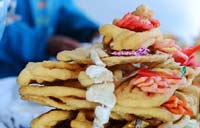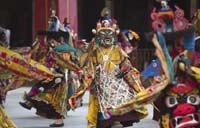Lhasa orphans mark Tibetan New Year with noodle feast
"Traditionally, guthuk contains nine ingredients, such as yak meat, cheese, a wild sweet potato called toma, cabbage, wheat, barley, beans, water, and salt," she said.
"Anything you find in your guthuk has a symbolic meaning. For example, paper in one's dough-ball suggests that one likes wandering here and there, and cheese represents a pure heart," she said.
"A broken piece of the bowl itself means one is gluttonous and lazy; a sun and moon in the bowl means good luck; and charcoal means something bad."
The children follow the feast with additional activities to bring on good luck and wash away the bad. They dispel evil spirits with the guthuk ritual, involving the anointment of their bodies with a paste made from roasted barely flour. Then they set off fireworks as a final signal that the New Year has really begun.
The festivities continued on Sunday morning, with the two nurses, Tsamjo and Tashi Lhamo, rising early to cook changku - cheese, brown sugar and roasted barley flour boiled in barley wine.
The children all got up at the crack of dawn and tucked into their changku breakfast, boosted by plates of khapsay - fried, sweet pastries.
Next, they made good-luck offerings to each other made from chemar - a mixture of roast barley flour and butter.
The various ceremonies represent both hopes for the future and thanks for the kindness of others.


















